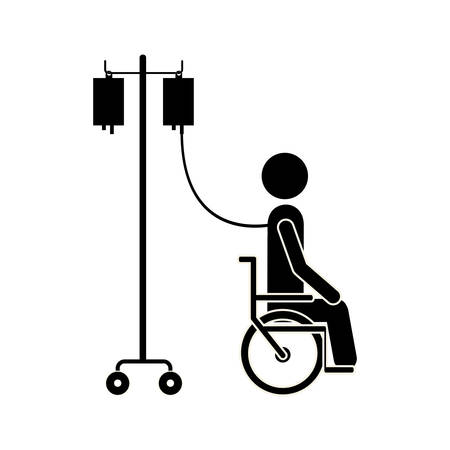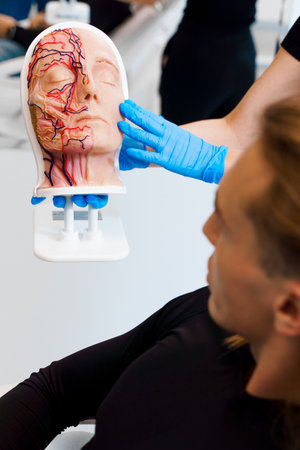Introduction to Electrical Stimulation Therapy
Electrical stimulation therapy, often called e-stim or EST, is a treatment that uses mild electrical currents to help manage pain, improve muscle function, and speed up recovery from injuries. This therapy has become a key part of physical rehabilitation and pain management across the United States. It is used by physical therapists, occupational therapists, and sometimes even at home under medical supervision.
What Is Electrical Stimulation Therapy?
At its core, electrical stimulation therapy involves placing small electrodes on the skin over targeted muscles or nerves. These electrodes deliver controlled electrical impulses that mimic the signals naturally sent by the nervous system. The main goals of this therapy include reducing pain, improving blood flow, strengthening weak muscles, and preventing muscle loss when regular movement isn’t possible.
Clinical Applications of Electrical Stimulation Therapy
| Condition | How EST Helps |
|---|---|
| Chronic Pain (like back or neck pain) | Interrupts pain signals and provides relief |
| Stroke Recovery | Stimulates weakened muscles to restore function |
| Sports Injuries | Reduces swelling and speeds up healing |
| Post-Surgical Rehabilitation | Prevents muscle loss and aids in regaining strength |
| Arthritis | Eases joint discomfort and increases mobility |
The Significance in the US Healthcare System
In the American healthcare landscape, electrical stimulation therapy is valued for its non-invasive nature and versatility. It can be an alternative for people who want to avoid medications or surgery, and it plays a vital role in both hospital settings and outpatient clinics. For many patients dealing with chronic conditions or recovering from injuries, e-stim offers hope for improved quality of life.
Sociodemographic Factors in Accessing E-Stim Therapy
The use of electrical stimulation therapy in the US is shaped by various factors including income level, health insurance coverage, geographic location (urban vs rural), age, and cultural background. These influences can create barriers or open doors for people seeking this type of care. Understanding these factors is crucial for making sure everyone who could benefit from e-stim therapy has access to it.
2. Socioeconomic Factors Affecting Access
How Income Level Impacts Access
Income is a major factor in whether someone can receive electrical stimulation therapy. People with higher incomes often have more options, like private insurance or the ability to pay out of pocket for treatments. In contrast, those with lower incomes may struggle to afford even basic healthcare, making advanced therapies less accessible.
Insurance Coverage and Its Role
Insurance coverage is a key player in healthcare access in the United States. Many health insurance plans cover some or all costs related to electrical stimulation therapy, but not all plans are created equal. Private insurance, Medicaid, and Medicare each have their own rules, and sometimes certain therapies or devices are not covered at all. This can leave patients responsible for significant out-of-pocket costs.
Comparing Insurance Types and Therapy Access
| Insurance Type | Covers Electrical Stimulation? | Typical Out-of-Pocket Costs |
|---|---|---|
| Private Insurance | Often (but varies by plan) | Moderate to High Copays/Deductibles |
| Medicare | Sometimes (restrictions apply) | Deductibles and 20% Coinsurance |
| Medicaid | Limited (state-dependent) | Usually Low or None |
| No Insurance | No Coverage | Full Cost Paid by Patient |
The Challenge of Healthcare Affordability
The overall affordability of healthcare in the US is a barrier for many people. Even with insurance, deductibles and copays can add up quickly. For families living paycheck to paycheck, these extra expenses might mean choosing between therapy and other basic needs like rent or groceries.
Simplified Example: Monthly Financial Impact
| Scenario | Total Monthly Income ($) | Estimated Monthly Therapy Cost ($) | % of Income Spent on Therapy |
|---|---|---|---|
| High Income, Good Insurance | 8000 | 100 (Copay) | 1.25% |
| Middle Income, Limited Insurance | 4000 | 300 (Partial Coverage) | 7.5% |
| Low Income, No Insurance | 1500 | 800 (Full Cost) | 53% |
These examples show how socioeconomic status directly affects access to necessary therapies like electrical stimulation. Without adequate financial resources or supportive insurance coverage, many Americans find this treatment out of reach.

3. Demographic Disparities in Utilization
Access to electrical stimulation therapy in the US is not the same for everyone. Several factors—like race, ethnicity, age, gender, and where a person lives—can make it easier or harder to get these services. Understanding these differences helps us see why some people might not get the care they need.
Race and Ethnicity
Studies show that Black, Hispanic, and Native American communities often face more barriers when trying to access rehabilitation therapies, including electrical stimulation. These barriers can include fewer clinics nearby, less insurance coverage, or language differences with providers. As a result, people from minority backgrounds may use these therapies less often than White patients.
Age
Younger patients might have better access because of parental support or school-based programs. Older adults, especially those living alone or on fixed incomes, may face challenges like transportation issues or lack of information about available treatments. Medicare coverage limitations can also affect seniors ability to afford electrical stimulation therapy.
Gender
Men and women may experience different access levels to therapy. For example, women might have additional caregiving responsibilities at home that limit their time for treatment sessions. In some areas, social expectations about seeking help for pain or disability can impact whether men pursue therapy services.
Geographic Location
Where someone lives makes a big difference. Urban areas usually have more clinics and specialists offering electrical stimulation therapy. In contrast, rural regions often have fewer providers and longer distances to travel for appointments. This can make it much harder for rural residents to start or continue treatment.
Table: How Demographics Affect Access to Therapy
| Demographic Factor | Potential Barriers | Impact on Access |
|---|---|---|
| Race/Ethnicity | Fewer clinics, insurance gaps, language barriers | Reduced utilization among minorities |
| Age | Lack of transport, limited Medicare coverage | Seniors face more obstacles; youth better supported |
| Gender | Caregiving duties, cultural norms | Differing rates of usage between men and women |
| Geography | Distance to providers, fewer specialists in rural areas | Lower access in rural locations compared to urban centers |
The Bottom Line on Demographic Disparities
Its clear that who you are and where you live can greatly affect your chances of getting electrical stimulation therapy in the US. By looking closely at these demographic factors, healthcare providers and policymakers can work toward solutions that help everyone get the care they need.
4. Cultural and Systemic Barriers
Understanding Cultural Perceptions of Electrical Stimulation Therapy
Cultural beliefs play a big role in whether people seek out electrical stimulation therapy in the US. Some communities may have doubts about the safety or effectiveness of this therapy due to traditional health beliefs or lack of exposure. For example, older adults from certain backgrounds might prefer natural remedies, while others might worry about the use of electricity in medical care. These perceptions can stop people from even considering this treatment option.
The Impact of Language Barriers
For many families in the US, English is not their first language. This makes it harder for them to understand how electrical stimulation therapy works or what benefits and risks it brings. Without clear communication, patients can feel confused or anxious, which often leads to missed appointments or incomplete treatments. Clinics may not always have interpreters available, adding another layer of difficulty for non-English speakers.
Common Language Challenges in Healthcare Settings
| Challenge | Impact on Access |
|---|---|
| Lack of translated materials | Patients may not understand instructions, leading to poor outcomes |
| No interpreter services | Miscommunication during appointments and consent process |
| Low health literacy | Difficulty following treatment plans or understanding therapy goals |
Health Literacy and Its Effects
Health literacy is about how well someone can find, understand, and use health information. Many Americans, especially those with lower incomes or less education, struggle with complex medical terms. If patients don’t fully understand why electrical stimulation therapy is recommended or how to use home devices safely, they might not get the full benefit—or could even hurt themselves by using equipment incorrectly.
Institutional Policies That Influence Access
The rules and policies set by hospitals, insurance companies, and government programs can make it easier or harder for people to receive electrical stimulation therapy. For instance, some insurance plans do not cover this type of therapy at all, while others only pay if strict criteria are met. Waiting lists, complicated paperwork, and requirements for referrals also limit access—especially for those who are already navigating cultural or language barriers.
Examples of Systemic Barriers
| Barrier Type | Description |
|---|---|
| Insurance limitations | Not all plans cover electrical stimulation therapy; high out-of-pocket costs for some families |
| Bureaucratic obstacles | Complex application processes discourage participation |
| Lack of culturally competent staff | Staff may not recognize or address specific cultural needs or preferences |
Toward Equitable Access: What Can Help?
Recognizing these barriers is the first step to making sure everyone has a fair chance at getting the care they need. Offering more language support, improving health education materials, training staff in cultural competence, and changing institutional policies can all make a real difference for diverse communities across the US.
5. Strategies to Improve Access and Equity
Addressing Socioeconomic and Demographic Barriers in Electrical Stimulation Therapy
Many people in the United States face challenges when trying to access electrical stimulation therapy due to factors like income, education, insurance coverage, race, ethnicity, and where they live. Healthcare providers and policymakers have a responsibility to help break down these barriers. Here are some practical recommendations and approaches that can make a real difference for diverse communities across the country.
Increase Insurance Coverage and Reduce Out-of-Pocket Costs
One of the biggest barriers is the cost of therapy. Many people cannot afford electrical stimulation therapy because their insurance doesn’t cover it or the out-of-pocket costs are too high. Policymakers can work with insurance companies to expand coverage for electrical stimulation devices and treatments, especially for people on Medicaid or with limited incomes. Providers can also help patients by connecting them with financial assistance programs or helping them understand their benefits.
Expand Provider Training and Community Outreach
Not all healthcare providers are equally familiar with electrical stimulation therapy, especially those serving rural or underserved areas. Offering training programs about the benefits, uses, and accessibility of this therapy can help more patients get referred for it. In addition, community outreach—such as informational sessions at local health centers or churches—can raise awareness among populations who may not know this treatment exists.
Embrace Telehealth and Mobile Health Solutions
For people living far from major medical centers or those with limited mobility, telehealth can be a game changer. Providers can use telemedicine to monitor progress, adjust settings on home-based devices, and offer consultations without requiring travel. Policymakers should support broadband expansion and funding for telehealth platforms so everyone has access regardless of where they live.
Culturally Sensitive Patient Education
Understanding cultural differences is key to effective patient education. Materials should be available in multiple languages and take into account different beliefs about disability and treatment. Providers can partner with community leaders to ensure that information about electrical stimulation therapy resonates with diverse audiences.
Summary Table: Actionable Approaches for Improving Access
| Barrier | Recommendation | Who Can Help? |
|---|---|---|
| High Cost/Insurance Gaps | Expand insurance coverage; offer financial assistance programs | Policymakers, Insurers, Providers |
| Lack of Awareness/Education | Community outreach; provider training; culturally sensitive materials | Providers, Community Leaders |
| Geographic Barriers | Telehealth services; mobile clinics; broadband access support | Policymakers, Tech Companies, Providers |
| Cultural/Linguistic Differences | Multilingual resources; engage community partners for education | Providers, Community Organizations |
Tackling these barriers requires cooperation from healthcare professionals, policymakers, insurers, and community leaders. By working together on these strategies, we can make electrical stimulation therapy more accessible and equitable for everyone in the US.


